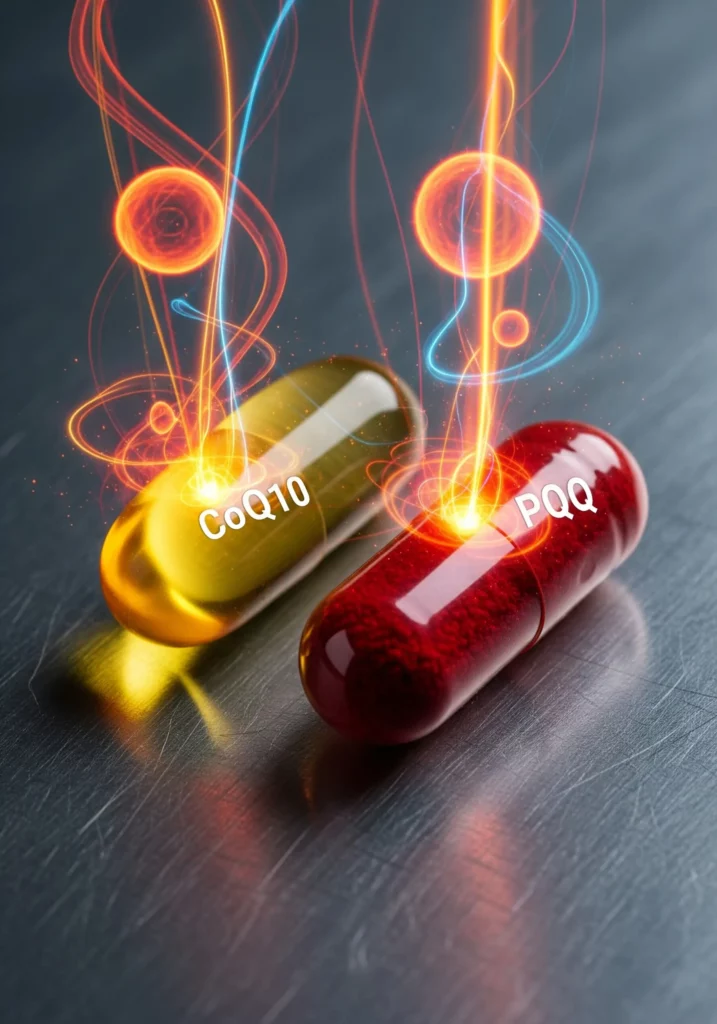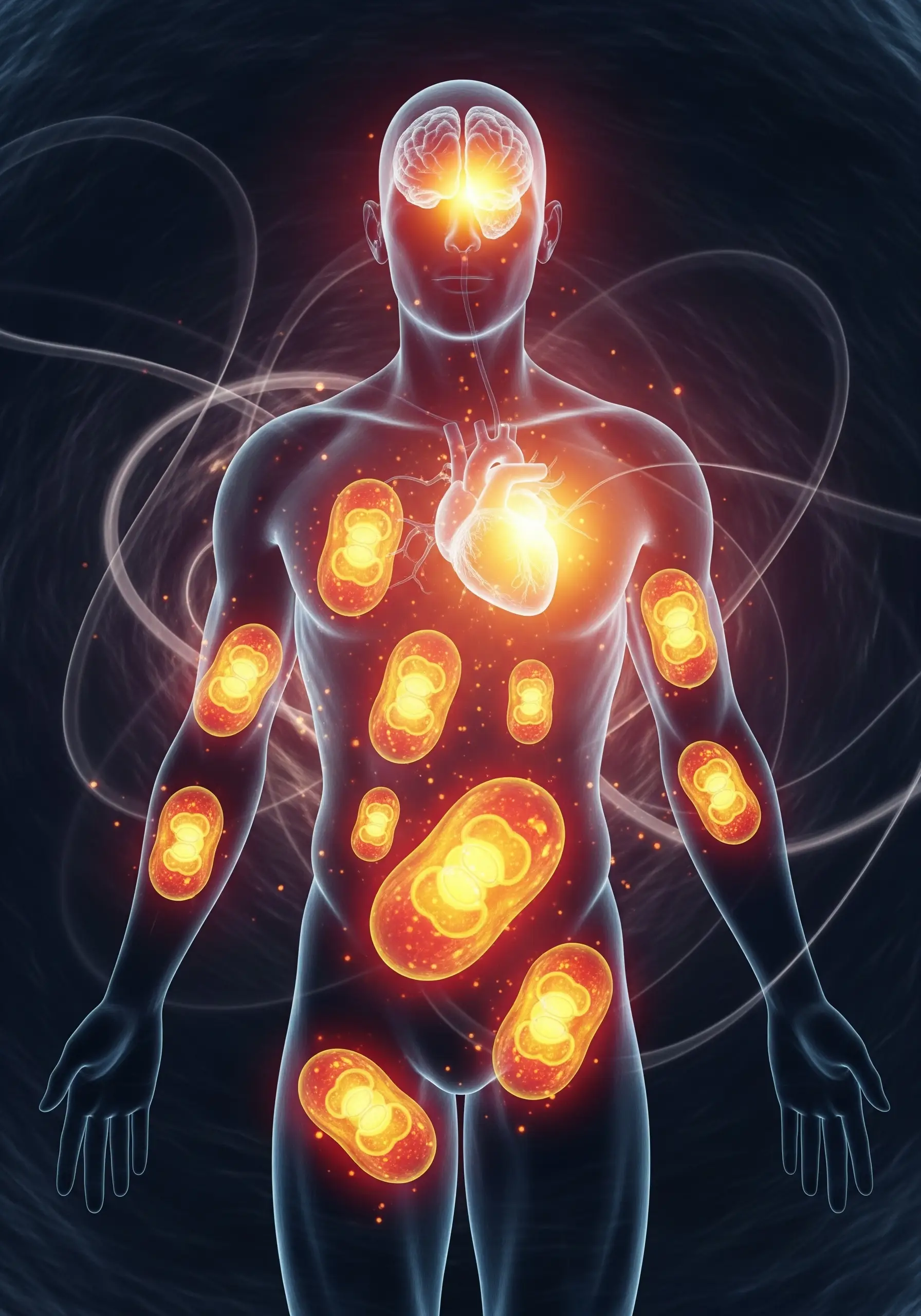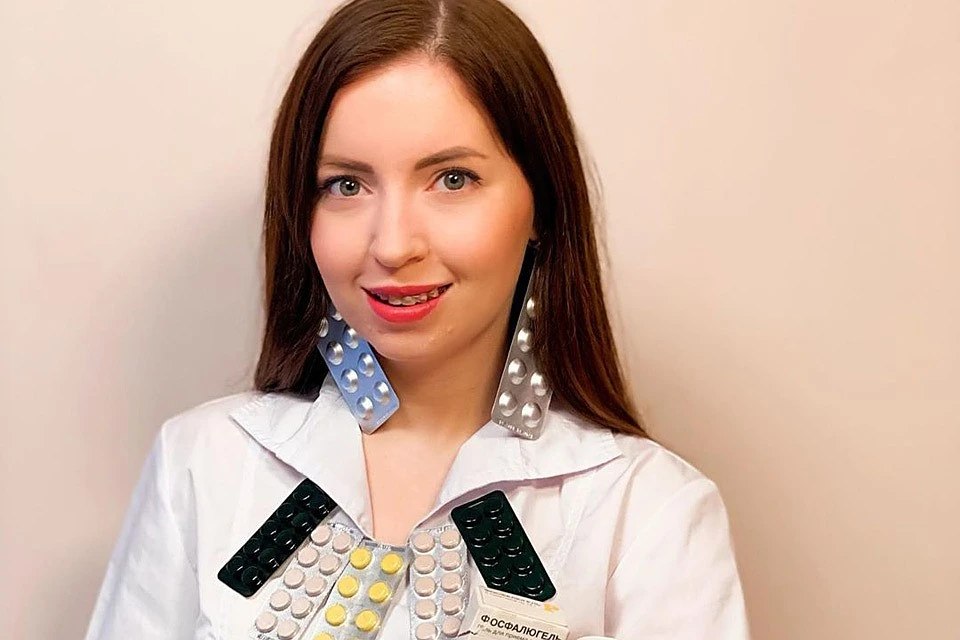

Modern fatigue is not just about lack of sleep. Often, its source is deeper — in cellular energy metabolism. Mitochondria, the “power plants” of cells, work less efficiently with age, stress, and nutrient deficiency.
The result — chronic fatigue, reduced concentration, dull skin, accelerated aging.

In modern nutraceutical research, two powerful mitochondrial co-activators have become a focus:
coenzyme Q10 (CoQ10) — a well-known antioxidant, and
pyrroloquinoline quinone (PQQ) — a recent discovery actively discussed at Vitafoods Europe 2025.

How CoQ10 Works
Coenzyme Q10 is a natural compound involved in the electron transport chain within mitochondria.
It provides the cell with energy (ATP), protects membranes from free radicals, and stabilizes the function of the heart, brain, and skin.
CoQ10 synthesis decreases with age:
-
by 25% — after age 30;
-
by 50% — after age 50.
Its deficiency is one of the causes of mitochondrial dysfunction, manifesting as fatigue, reduced cognitive function, and loss of skin elasticity.

What PQQ Is and Why It’s Called the “New Longevity Vitamin”
PQQ (pyrroloquinoline quinone) is a natural compound first isolated from bacteria, involved in the growth of new mitochondria (mitochondriogenesis).
Unlike CoQ10, which protects mitochondria, PQQ helps create new ones.
The CoQ10 + PQQ combination is a synergy:
-
CoQ10 increases the efficiency of existing mitochondria;
-
PQQ stimulates the formation of new ones;
-
both reduce oxidative stress and inflammation.
Table 1. Comparison of CoQ10 and PQQ properties
| Parameter | CoQ10 (ubiquinone/ubiquinol) | PQQ (pyrroloquinoline quinone) |
|---|---|---|
| Main function | Electron energy transfer | Stimulates formation of new mitochondria |
| Sources | Meat, fish, broccoli, spinach | Fermented soy products, kiwi, green tea |
| Bioavailability | Enhanced in ubiquinol form | High with microencapsulation |
| Additional effect | Antioxidant, cardioprotective | Neuroprotective, anti-stress |
| Dosage | 100–300 mg/day | 10–20 mg/day |
| New delivery systems | Nanoliposomes, chewable gummies | Microencapsulated granules, powders |
CoQ10 + PQQ Synergy: Dual Action
-
Improved energy metabolism — increased ATP levels in muscles and brain.
-
Antioxidant protection — neutralization of ROS (Reactive Oxygen Species).
-
Cardiovascular support — improved oxygen utilization.
-
Neuron protection — increased resilience to stress, improved memory.
-
Anti-aging effect — activation of longevity genes (SIRT1, NRF2).
Table 2. Modern delivery systems of mitochondrial nutraceuticals (2025)
| Delivery system | Features | Bioavailability | Comment |
|---|---|---|---|
| Liposome | Phospholipid capsule for better absorption | Very high | Optimal for CoQ10 |
| Microencapsulated | Slow release, oxidation protection | High | Used for PQQ |
| Chewable gummies | Convenient form, gluten-free | Medium | 2025 trend |
| Powder blends for drinks | Combination of CoQ10 + magnesium + vitamin B2 | Good | For morning intake |
| Synergistic capsules CoQ10 + PQQ + NADH | Comprehensive action | Maximum | Top trend Vitafoods 2025 |
Practical Recommendations
-
Take CoQ10 with fat-containing food for better absorption.
-
To restore energy after stress or illness, choose the combination CoQ10 + PQQ + NADH.
-
Course — at least 8–12 weeks.
-
For people over 40 — in ubiquinol form (restored form of CoQ10).
-
PQQ can be taken in the morning or during the day — it has a stimulating effect.
FAQ
Can CoQ10 and PQQ be taken together with B vitamins?
Yes, especially with B2 and B3 — they are coenzymes of energy metabolism.
When is the effect of CoQ10 noticeable?
Usually after 2–4 weeks of regular intake.
Does CoQ10 affect the skin?
Yes, it improves cellular respiration and antioxidant protection of the dermis, slowing aging.
Does PQQ have contraindications?
Not recommended for pregnant women and children under 12 due to insufficient research.
Can CoQ10 be taken with heart medications?
Yes, but under medical supervision: CoQ10 may enhance the effect of antihypertensive drugs.
Conclusions
Mitochondrial nutraceuticals are the new wave of bioenergetic medicine.
They do not stimulate short-term like caffeine but restore the cell’s baseline energy.
Coenzyme Q10 and PQQ act in tandem: the first protects, the second renews.
Together they form the foundation of modern anti-aging and anti-fatigue programs aimed at endurance, mental clarity, and slowing aging.
References
-
Rucker R. et al. Coenzyme Q10 and Pyrroloquinoline Quinone: Bioenergetic Partners. Mitochondrion, 2023.
-
Chowanadisai W. PQQ: Novel redox cofactor and stimulator of mitochondrial biogenesis. J Nutr Biochem, 2022.
-
Vitafoods Europe 2025 Trend Report. Mitochondrial Nutraceuticals and Energy Health.
-
Somayajulu M. et al. CoQ10 supplementation and mitochondrial function in aging. Aging Cell, 2024.
-
Tiano L. et al. Ubiquinol and cellular energy metabolism. Nutrients, 2023.



